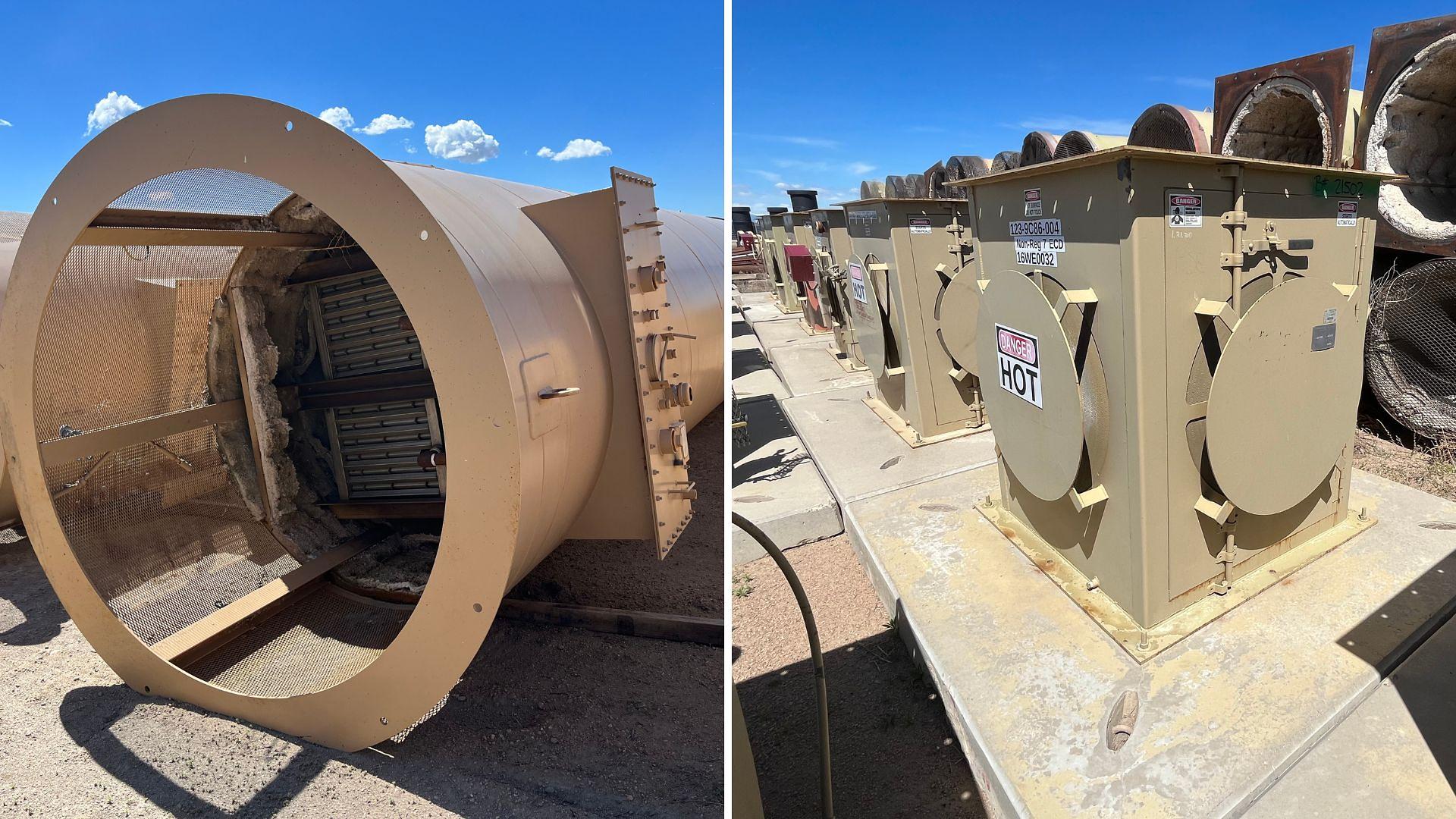What Are Enclosed Combustors?
Enclosed combustors (ECDs), sometimes called enclosed flares or thermal oxidizers, are purpose-built control devices that destroy hydrocarbon vapors in a shielded, refractory-lined chamber. Unlike open flares, the flame zone is protected from wind, which helps stabilize combustion, reduce visible emissions, and lower noise. In practice, ECDs are frequently selected when routing gas to sales isn’t feasible and a vapor recovery unit (VRU) isn’t economical or reliable for the duty cycle.

These units are designed to handle various waste gas streams common in upstream operations, including tank vapors, well testing gases, and process vent streams. Modern enclosed combustors are designed and tested to meet EPA NSPS OOOOa/OOOOb/OOOOc requirements for at least 95% total hydrocarbon destruction (as propane), and many manufacturer-tested units demonstrate >99% combustion efficiency under compliant test protocols.
Key Design Considerations
When selecting an enclosed combustor for your operation, several critical factors determine proper sizing and performance.
Gas Composition and Heating Value
The molecular composition of your waste gas stream directly impacts combustor sizing. Heavier hydrocarbon molecules and higher BTU content require different combustion chamber designs and residence times. Each combustor is rated for specific BTU per hour capacity; typically ranging from 5 to 50 million BTUs per hour for upstream applications.
Flow Rate and Line Pressure
Available line pressure is crucial for moving gas to the combustor and ensuring proper mixing with combustion air. Many operators underestimate pressure losses through vapor lines, especially over longer distances. Ensure sufficient available pressure at the ECD inlet after line losses (often measured in inches of water column to a few psig); verify with the manufacturer’s spec and applicable fuel-gas code.
Distance and Installation Requirements
Be sure to follow applicable provincial/state code and the manufacturer’s installation manual.
Operational Advantages
The combination of residence time, elevated combustion temperatures, and a turbulent mixing zone create greater combustion efficiency compared to open flaring systems. This enhanced efficiency translates to several operational benefits
- Proper combustor operation produces no visible emissions, avoiding regulatory violations and community concerns
- Enclosed design prevents wind interference with combustion efficiency
- Contained combustion significantly reduces operational noise compared to open flares
- Protected burner components experience less weathering and fouling
Common Troubleshooting Issues
The most frequent operational issue with enclosed combustors is smoking, which indicates incomplete combustion and potential regulatory violations. When troubleshooting smoking issues, follow this systematic approach
Check Air Restrictions
Examine combustion air intakes for blockages from debris, ice formation, or inadequate sizing. Restricted air flow prevents proper fuel-air mixing, leading to incomplete combustion.
Verify Fuel Pressure
Monitor line pressure to ensure adequate fuel delivery. Install pressure gauges or transmitters to track performance over time. Insufficient pressure often results from undersized vapor lines or excessive distances from the source.
Inspect Burner Components
Internal burner restrictions from hydrocarbon deposits or manufacturing debris can disrupt proper mixing. This typically requires manufacturer assistance to properly clean and inspect burner internals.
Address Liquid Dropout
Heavy hydrocarbon liquids in the vapor stream can cause significant smoking and safety hazards. Install knockout pots upstream of the combustor with proper drainage systems. Ensure vapor lines slope toward knockout vessels to prevent liquid accumulation.
Regulatory Compliance
Under the Clean Air Act rules for the oil & gas sector, ECDs used as control devices must achieve at least 95% reduction of total hydrocarbons (as propane). Many commercial units demonstrate higher efficiencies (>99%) during compliant performance tests, but 95% is the regulatory floor you must plan and monitor against.
Be sure to reference NSPS OOOOa and the 2024 OOOOb/OOOOc rules for storage tanks and other designated facilities; document performance testing, continuous pilot/flame verification, and remote monitoring where required.
EPA materials make clear that operators must have continuous pilot flame or auto-ignition with flame detection, and ongoing monitoring so the device maintains the required control at all times. Recent rule materials discuss vent gas net heating value (NHV) monitoring and an alternative performance-test option for ECDs/flares; check your specific applicability and deadlines.
In conclusion, enclosed combustors have become indispensable equipment in upstream oil and gas operations, offering reliable emission control while maintaining operational flexibility. When properly sized and installed, these units provide years of trouble-free service while helping operators meet environmental obligations.
For operators evaluating emission control options, enclosed combustors offer an effective alternative when vapor recovery isn't economically feasible, providing both environmental compliance and operational reliability in demanding upstream environments.
